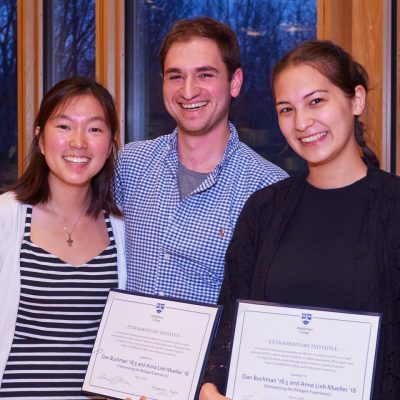Article
Two summers ago, Senior Fellows Rachel Salcedo and Daniel McElroy undertook a research trip across Arizona, New Mexico and Texas, meeting with legal aid, social services and advocacy organizations on the frontlines of America’s immigration debate. They had originally received the funding for this trip towards realizing an artistic response to the abundance of misinformation surrounding the issue, but also hoped to at some point use the experience towards a more academic/educational end—when it came time to develop an Action Project, it seemed the perfect opportunity to continue with a subject they are both passionate about.
As much as American media does cover issues surrounding immigration, Rachel and Daniel found that the information presented is almost always incomplete. News reports on everything, from Immigration and Customs Enforcement (ICE) raids on undocumented communities to Trump’s infamous border wall, and from migrants’ harrowing journeys to the U.S. to their plight crossing arid Southwestern deserts, are often presented as 2-minute news segments or quick online reads that leave out much more of the story than they tell. By creating a simulation that asks you to, in effect, become one of these migrants, Rachel and Daniel are hoping to bring together the different fragments of a much wider narrative.
News reports are often presented as 2-minute news segments or quick online reads that leave out much more of the story than they tell.
Their website offers three different stories that users can choose to follow. Each story allows the user to make various choices along the way that will impact their outcome. Each portion of the story also has information that helps supplement the experience and reminds the user of the very human implications and costs of immigration and asylum.
They began work on Path to Asylum by re-visiting their original research. This involved updating it to be in line with the most recent policy updates surrounding the issue, and also involved a great deal more research as they chose to broaden the scope of the site to include one simulation of an asylum seeker coming from Egypt, a very different path than the other two simulations developed.
Rachel and Daniel hope that the model contextualizes this subject for users, allowing them to gain empathy for asylum seekers in a way that simply hearing soundbites and news headlines cannot.
Collecting outside resources for the participants to read further was a challenge for Rachel and Daniel. This element took the most amount of time. Rachel and Daniel hope to continue to refine the research and update the site as circumstances change in the public sphere. They would also love to eventually collaborate with more skillful web developers to deepen the functionality of the site and offer an even more interactive experience.




